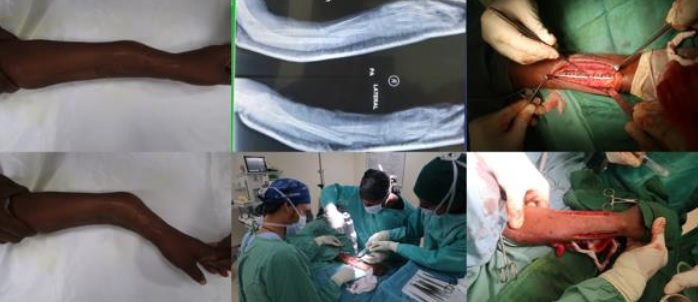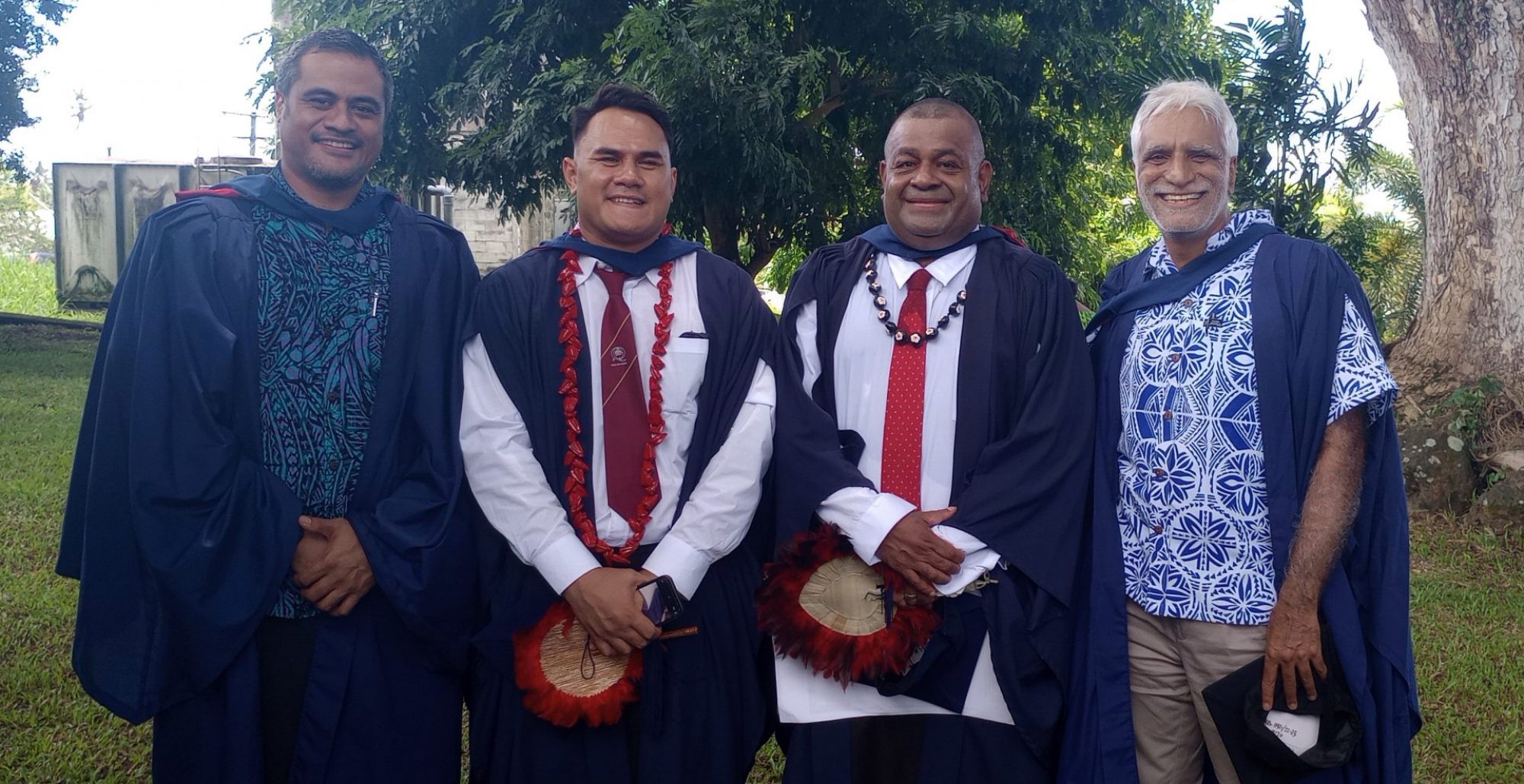PIOA Supervision visit in Kavieng, Papua New Guinea (PNG) November 2017
Dr. med. Philipp F. Stillhard, General- and Trauma Surgeon, incl. Orthopaedic Trauma
Kavieng
Kavieng is the capital of Papua New Guinean province of New Ireland and the largest town on the island of the same name. The town is located at Balgai Bay, on the northern tip of the island and it is both a trading and a tourist destination. The Kavieng Hospital is responsible for over 200.000 people in New Ireland Province. My accommodation is on a small island, called Lissenung Island, a 20 minutes’ boat-ride from the hospital.
Dr. Thomas Kiele, a PIOA trainee, is working in a small team of three, a fellow resident a consultant and himself. The ward buildings are old and some of them would need some renovations. Energy and water supply seems more or less sufficient. Unfortunately, the new operation tract, opened one year ago, has still some unsolved problems and only one of two OTs can be used. The OT-team is motivated and highly trained, clinical nurses provide an anaesthetic service and the surgeons are responsible for regional anaesthesia. However, the actual main problem is the modern digital x-ray machine. Sometimes it works, sometimes not and even when it works there are no printed films and x-rays can only be looked at one computer in the x-ray department leading to a difficult situation for daily work, especially in clinics and OT. An intraoperative C-arm is on its way, hopefully it will arrive at the end of this year.

A small fragment set, a donation from New Zealand, is available with screws, DCPs, 1/3 tubular plates, some Recon- and T-plates as well as its reposition clamps and K-wires. A power drill just arrived some days ago, unfortunately without quick coupling and the key for the Jacobs chuck is missing as well. I realized that Thomas and his team has no idea what amount of osteosynthesis material they have in stock. Finally, we went on to count all the plates, screws and reposition clamps and wrote it down in an Excel file, which I got kindly from Alois from Popondetta.
My first day at Kavieng Hospital, we did an extensive ward-round, discussed all the orthopaedic cases for its non-operative or operative treatment. We have been recruited patients from the surgical ward and from the out-patient clinic, especially with non- and mal-unions around the forearm and some cases of osteomyelitis. Just some cases to mention:
Case 1: A young lady with a history of broken left forearm 3 years ago. Initial treatment was done by a rush pin. Healed in a malposition. After removal, a second fall followed and the forearm was treated non-operatively. Finally, a non-union was the result. We discussed the different approaches for the forearm, treatments for non-and mal-unions and of course how to use the new power-drill. Unfortunately, getting a new x-ray was not possible because of the faulty x-ray machine. But clinically it was obviously a non-union.
 This was the first time a power-drill was used up here and I did some training with Thomas and his team including the OT-team how to prepare and sterilize.
This was the first time a power-drill was used up here and I did some training with Thomas and his team including the OT-team how to prepare and sterilize.
Case 2: A 12 years old girl with an old dislocated radial head fracture leading to a huge extension and flexion deficit as well as no pronation and supination movement anymore. After explaining the operation and avascular necrosis risk to the patient we decided to go for an operation over a lateral approach, exposed the dislocated radial head followed by an osteotomy and reduction and fixed it with percutaneous K-wires.

Unfortunately, there are no postoperative x-rays available for all these cases we did because of the broken x-ray machine.
Next to all the operations and teaching in the OT, we discussed fracture management around the humerus, femur and tibia and its different approaches as well as intraoperative use of the C-arm in orthopaedic trauma care because of the arriving C-arm at the end of this year. I also got the possibility to talk about the idea behind PIOA in a morning discussion with all members from the hospital medical board. Hopefully, they got my message about supporting Thomas for his PIOA training as well as financial support for further osteosynthesis material.
After all this work, Thomas showed me how life is going on up in Kavieng. He showed me the market and took me out to a boat ride with his friends

Future ideas
More supervision missions should be organised for the Kavieng Hospital. Dr. Thomas is motivated to learn but the support he gets from the local surgeon is quite low because of leaking knowledge in osteosynthesis. Furthermore, a large fragment set should be the next investment or donation because right now the only treatment for long bone fractures is ExFix. With the arriving of the C-arm, there also should be some instructions how to use it in daily practise and protection overalls are absolute necessary. The hospital should realize that it must support Dr. Thomas with buying some implants and screws. To mention only one deficiency, shorter sizes of screws in the small fragment set already run out and so do plate soon.
Furthermore, Thomas will regularly update his PIOA database and implant register.
Philipp F. Stillhard, Kavieng 03/12/2017

